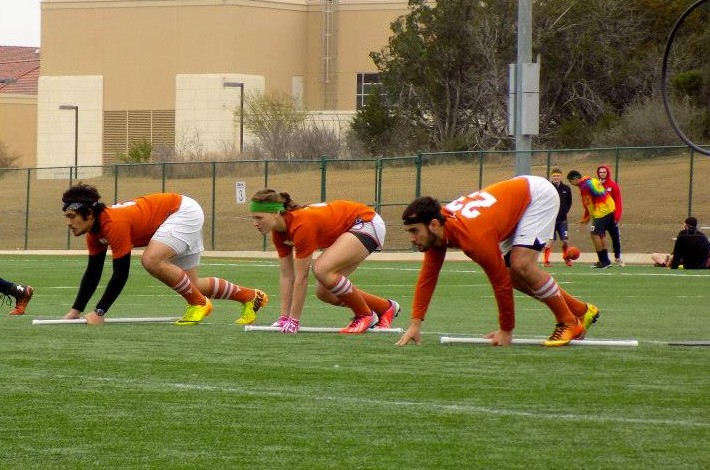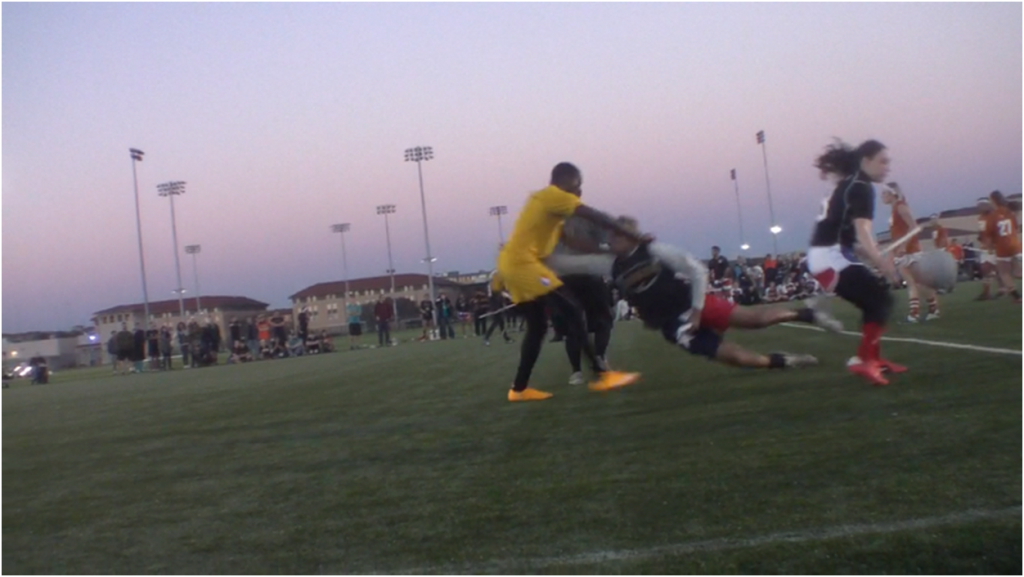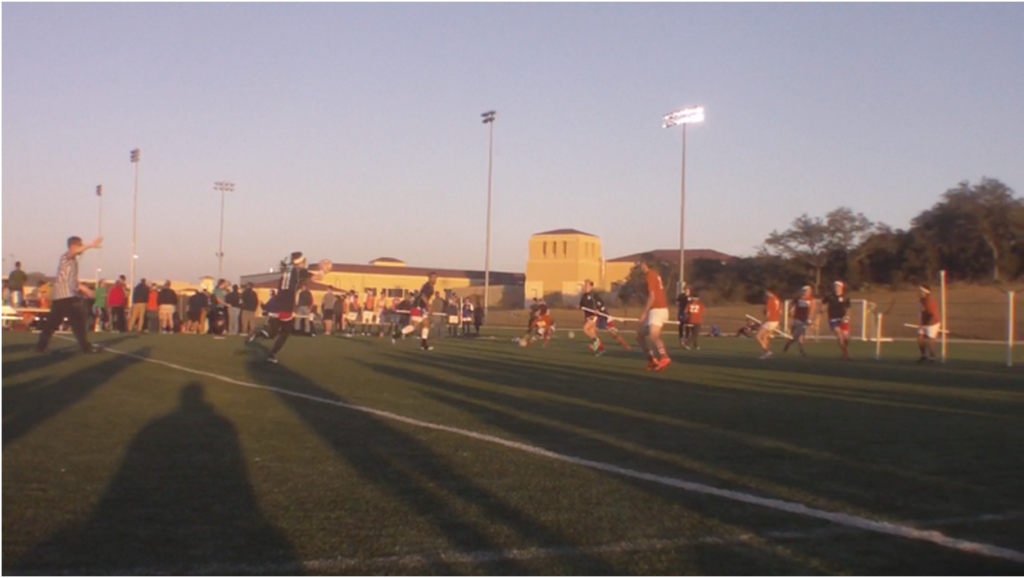- Rule, Britannia, no more?
- Unpopular Opinions: US Quadball Cup 2023
- Proven Contenders: University of Virginia
- Proven Contenders: Rutgers University
- Proven Contenders: University of Michigan
- Proven Contenders: Creighton University
- Different Perspectives: A Look Inside USA Ultimate
- Antwerp QC, Much of Belgian Core, Leaves Competitive Quidditch
Letter to the Editor: Dissection of the ‘Little Things’
- Updated: February 18, 2015

Courtesy of Michael Duquette
The Eighth Man welcomes letters to the editor and article submissions from the general public on our website. The views expressed in these letters and articles, and in personal editor responses, are the opinion of the authors and are not necessarily the views of The Eighth Man. Send your work to editors@eighthman.com
By Peter Lee
Everyone’s been buzzing about the University of Texas vs. Lone Star Quidditch Club game. The Eighth Man recently published a shootaround, but I also wanted to add my two cents. I want to focus, specifically, on what Ethan Sturm and Kyle Jeon wrote about Lone Star’s beating and Texas’ seeking.
Every time these two teams go head to head, it has resulted in a snitch-range game. This indicates that the disparity between these two teams is not very vast–similar levels of talent and effort are both present. It is the commonly cited “little things” or the subtle actions that, while only affecting a goal or two per game, add up in the long run and eventually lead to the crowning of a victor.
Southwest teams (save for LSU) have typically played their beaters conservatively on offense, regardless of whether they held bludger control. While this strategy has its merits in that it prevents a no-bludger situation on the defensive transition, it also severely hampers the potential for offense. It creates a situation in which four offensive quaffle players go up against six defenders, including two beaters with bludger control. Against teams with strong beaters, this makes scoring an immensely difficult task.
We have seen a shift this year with Lone Star. Without bludger control, the team has been bringing its beaters up to regain possession, as well as to open driving lanes. Lone Star wants something like the clip below to happen:
[Texas vs. Lone Star: 10:51 – 11:01]
Lone Star scores and gets bludger control–the ultimate goal of an offensive drive.
While the rewards are great, the risks are even greater–running this type of offense requires full communication between the beaters and quaffle players. In particular, when the first offensive beat is unsuccessful, the offense should and must slow, fall back and reset. How the offense reacts when this happens demonstrates a team’s patience and discipline.
In the clip below, after Texas beater Michael Duquette makes a great dodge on the beat by Lone Star’s Mathieu Gregoire, Lone Star is put in a bad situation. The team’s only bludger is pretty much off pitch at this point and Lone Star’s other beater, Mollie Lensing, is beat. If a quaffle turnover occurs any time in the next 15 seconds, Lone Star will have a bludgerless defense.
[Texas vs. Lone Star: 2:10 – 2:25]
In the below image, instead of holding back and waiting for a reset, Lone Star’s Sarah Holub takes advantage of Duquette’s temporary, vulnerable positioning after the beat to attack. While most ball handlers are tempted to do the same, the screenshot below demonstrates a scenario in which the reward (a relatively low chance of scoring) is minuscule compared to the risk (high possibility for a no-bludger, defensive situation). While Lone Star does end up scoring, it does not work out so well for the team on its next possession.
What is noticeable in this next clip (below) is Lone Star’s impatience despite playing a man down with its male beater in the penalty box. When Lensing gets beat, she has to let ball-handler Stephen Bell know, and Bell must then realize that with only two players left on his side of the field, he should pull back. The reward here, unless there is a totally wide-open chaser next to an empty hoop, isn’t worth the risk, and Texas takes advantage of Lone Star’s lackluster decisions by scoring.
[Texas vs. Lone Star: 4:12-4:28]
The same happens with Lone Star quaffle players Kody Marshall and Drew Wasikowski handling the ball:
[Texas vs. Lone Star: 4:40 – 4:52]
[Texas vs. Lone Star 9:10 – 9:22]
In the end, running this style of offense takes a lot of practice and experience, and Lone Star’s lack of experience shows when rewatching the film.
The next aspect of the game I want to address is Texas’ seeking strategy. It seemed that the team did not want its seeker to actually seek unless the snitch was on Texas’ side of the field with no one else around.
In the clip below, watch as Texas’ seeker blocks Lone Star’s seeker, even when Duquette is about to make a beat from between the snitch and the Lone Star seeker:
[Texas vs. Lone Star: 27:10 – 27:18]
It also happens in this next clip. Even when the Texas seeker is alone with the snitch and after the Lone Star seeker gets beat, the Texas seeker isn’t pursuing a grab:
[Texas vs. Lone Star: 29:19 – 29:33]
I can understand why Texas does this, since the team has almost no equal in terms of its brute-force quaffle game. The squad can prevent any fluke catches from taking place when the snitch isn’t paying attention to the opposing seeker. However, it might want to reconsider this strategy against Lone Star, which seemed to be the better team during snitch-on-pitch play. The Lone Star seekers managed some quality alone time with the snitch and almost caught it twice, including in the shot below. Notice how the seeker’s hand is behind the snitch while said seeker makes a dive:

The final catch, incidentally, came on exactly what Texas was trying to prevent against its opponent: a bit of a fluke grab where the snitch turned to avoid Gregoire’s lunge and, in turn, fell right into the Texas seeker’s hands:
[Texas vs. Lone Star: 34 min.]
The scary part for everyone else in the country is that these mistakes are for the most part correctable. If Lone Star does not allow the bludgerless drives to occur in the future, or if the game went on for another 10 minutes, then we might still be talking about the community team’s gritty win over Texas. But we have reached a point where both teams are so talented that the better team doesn’t always win. Execution, strategy and sheer luck were what determined the outcome of this game.
After Thoughts
- I love Texas’ ball-handoff offense. I have always advocated a handoff-read offense.
- It is impressive that Texas prevailed without Augustine Monroe. It really shows that no one player is too important to the Longhorns.
- Texas’ beaters made at least three last-minute beats to prevent Lone Star from scoring. Not only does that keep the score down, but it is also a morale boost for a team that feeds off that kind of energy.
- There was a helpless receiver play from the Texas keeper against a Lone Star chaser that went uncalled.
- On defense, Texas beater Freddy Salinas loves beating opposing offensive beaters, grabbing that beater’s ball and then beating the opposing ball handler. It worked and failed once apiece this game.
All gifs from footage of University of Texas vs. Lone Star Quidditch Club at Alamo Cup.




